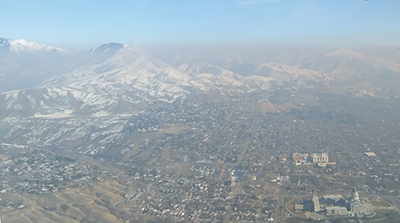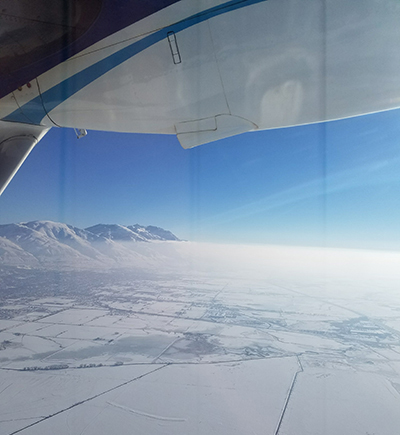2017 News & Events
Air Monitoring Takes Flight Above Utah This Winter
19 January 2017
adapted from the story by CIRES Communications


Utah's Department of Environmental Quality (DEQ) and partners will examine winter pollution aboard the NOAA Twin Otter.
Salt Lake City might be nestled into the beautiful Wasatch Mountains but the air there, especially in winter, is far from clean. In fact, the city suffers from some of the worst wintertime air pollution in the country. To better understand this phenomenon, the Utah DEQ Division of Air Quality (DAQ) and its federal partners have set up an air monitoring station aboard an aircraft to collect data during winter conditions, especially inversions.
The Utah Winter Fine Particulate Study (UWFPS) began this week and will be one of the most significant air quality studies in Utah. It involves the specially-equipped NOAA Twin Otter aircraft, along with multiple ground-based observation sites. The aircraft will fly over the Cache, Salt Lake, and Utah Valleys from now until 14 February 2017, to survey the chemical conditions responsible for the formation of particulate pollution.
NOAA and CIRES researchers are partnering with the DAQ and you can follow them via the CIRES UWFPS blog Air Quality in Salt Lake City: A Twin Otter Aircraft Study.